Complete Solutions to Single Correct of chapter LINEAR AND ANGULAR SIMPLE HARMONIC MOTION of Class 11 book with complete answers and questions
| Class 11 | PHYSICS |
| Chapter | LINEAR AND ANGULAR SIMPLE HARMONIC MOTION |
| CENGAGE PHYSICS | Single Correct |
| Number Of Questions | 100 |
| Academic Year | 2023-24 |
While a particle executes linear simple harmonic motion
05:13View SolutionWhile a particle executes simple harmonic motion, the rate of change of acceleration is maximum and minimum respectively at
01:59View SolutionA hollow sphere is filled with water. It is hung by a long thread. As the water flows out of a hole at the bottom, the period of oscillation will
04:04View SolutionA simple pendulum oscillates slightly above a large horizontal metal plate. The bob is given a charge. The time period
06:07View SolutionA block is resting on a piston which executes simple harmonic motion in vertical plain with a period of `2.0s` in vertical plane at an amplitude just sufficient for the block to separate from the piston. The maximum velocity of the piston is
03:28View SolutionThe number of independent constituent simple harmonic motions yielding a resultant displacement equation of the periodic motion as `y=8sin^2((t)/(2))sin(10t)` is
02:43View Solution
The diagram below shows a sinusoidal curve. The equation of the curve will be05:04View Solution
The following figure shows the displacement versus time graph for two particles A and B executing simple harmonic motions. The ratio of their maximum velocities is03:52View Solution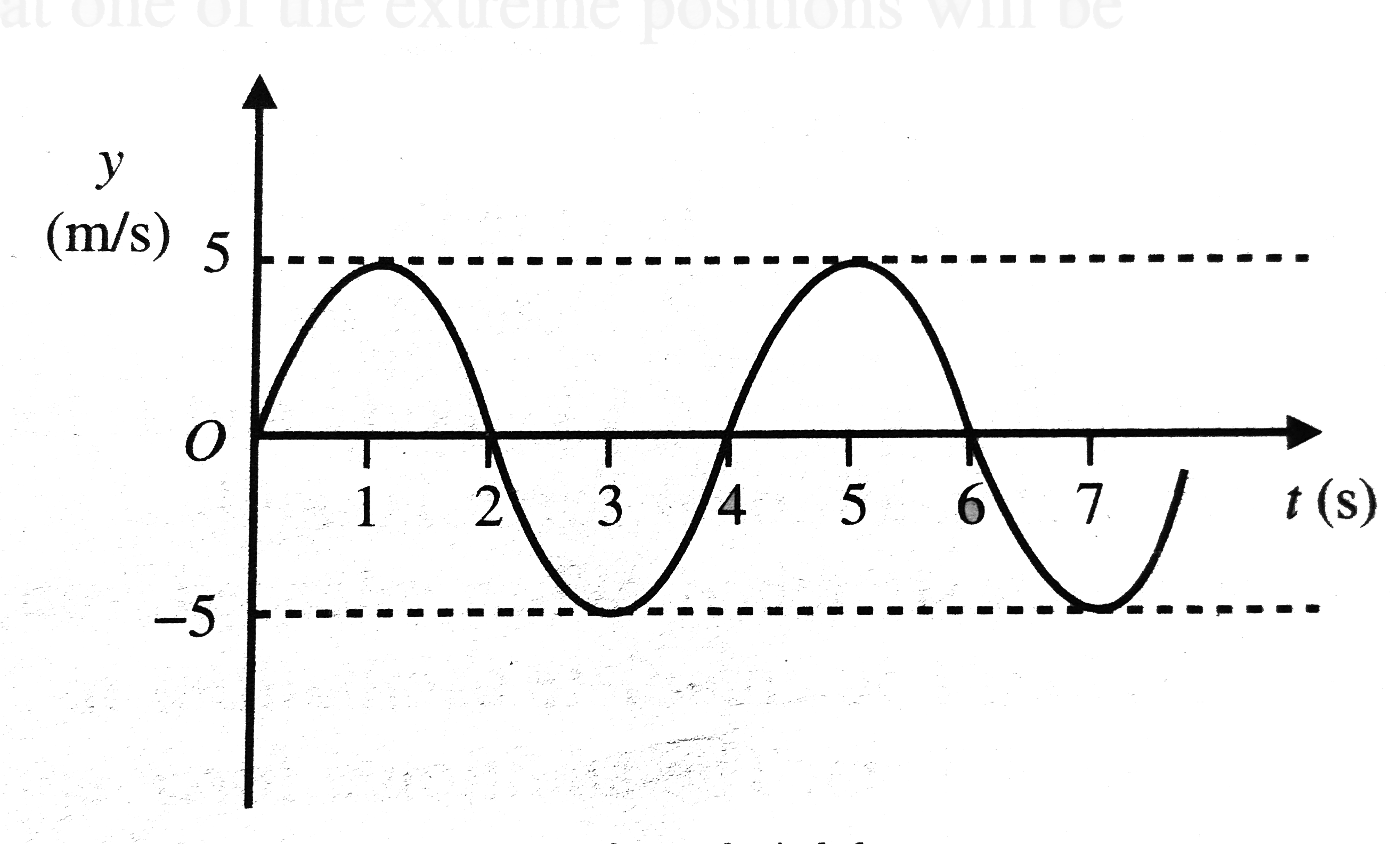
The variation of velocity of a particle executing SHM with time is shown is fig. The velocity of the particle when a phase change of `(pi)/(6)` takes place from the instant it is at one of the extreme positions will be04:38View SolutionIn the previous problem, the displacement of the particle from the mean position corresponding to the instant mentioned is
03:16View SolutionIn problem 11446787 the maximum displacement and acceleration of the particle are respectively:
00:54View SolutionIn problem 9 the acceleration of the particle is
00:54View Solution
Figure. Shows the variation of force acting on a particle of mass 400 g executing simple harmonic motion. The frequency of oscillation of the particle is02:01View SolutionA block of mass `1kg` hangs without vibrating at the end of a spring whose force constant is `200(N)/(m)` and which is attached to the ceiling of an elevator. The elevator is rising with an upward acceleration of `(g)/(3)` when the acceleration suddenly ceases. The angular frequency of the block after the acceleration ceases is
01:47View SolutionA vertical spring carries a `5kg` body and is hanging in equilibrium an additional force is applied so that the spring is further stretched. When released from this position. It performs 50 complete oscillation in 25 s, with an amplitude of 5 cm. The additional force applied is
01:51View SolutionA particle performs SHM in a straight line. In the first second, starting from rest, it travels a distance a and in the next second it travels a distance b in the same side of mean position. The amplitude of the SHM is
05:11View SolutionA particle free to move along the (x - axis) hsd potential energy given by `U(x)= k[1 - exp(-x^2)] for -o o le x le + o o`, where (k) is a positive constant of appropriate dimensions. Then.
05:00View SolutionTwo simple harmonic motion are represented by equations
`y_(1) = 4 sin (10 t + phi) rArr y_(2) = 5 cos 10t`
What is the phase difference between their velocities ?01:29View SolutionThe matallic bob of a simple pendulum has the relative density `rho`. The time period of this pendulum is `T` it the metallic bob is immersed in water the new time period is given by
02:50View SolutionTwo particles move parallel to x - axis about the origin with the same amplitude and frequency. At a certain instant they are found at distance `(A)/(3)` from the origin on opposite sides but their velocities are found to be in the same direction. What is the phase difference between the two ?
07:58View SolutionThe potential energy of a particle executing SHM along the x-axis is given by `U=U_0-U_0cosax`. What is the period of oscillation?
02:14View SolutionA particle executing SHM of amplitude `a` has displace ment `(a)/(2)` at `t=(T)/(4)` and a negative velocity. The epoch of the particle is
03:37View SolutionA block of mass 4 kg hangs from a spring constant `k=400(N)/(m)`. The block is pulled down through 15 cm below and released. What is its kinetic energy when the block is 10 above the equilibrium position.?
03:01View SolutionA body of mass 100 g attached to a spring executed SHM of period 2 s and amplitude 10 cm. How long a time is required for it to move from a point 5 cm below its equilibrium position to a point 5 cm above it, when it makes simple harmonic vertical oscillation (take `g=10(m)/(s^2)`)?
02:55View SolutionA particle executing SHM has velocities `u` and `v` and acceleration `a` and `b` in two of its position. Find the distance between these two positions.
02:53View SolutionTwo particles are executing identical simple harmonic motions described by the equations `x_1=acos(omegat+(pi)/(6))` and `x_2=acos(omegat+(pi)/(3))`. The minimum interval of time between the particles crossing the respective mean positions is `(pi)/(2omega)`
03:21View SolutionThe `KE` and `PE` , at is a particle executing `SHM` with amplitude `A` will be equal when its displacement is
01:42View SolutionA body is performing simple harmonic motion with amplitude `a` and time period `T` variation of its acceleration `(f)` with time`(t)` is shown in figure If at time `t` velocity of the body is `v` which of the following graph is correct?
 02:59View Solution
02:59View SolutionA body is performing simple harmonic motion with amplitude `a` and time period `T` variation of its acceleration `(f)` with time`(t)` is shown in figure If at time `t` velocity of the body is `v` which of the following graph is correct?
 03:14View Solution
03:14View Solution
A particle is performing SHM. Its kinetic energy K varies with time t as shown in the figure. ThenView SolutionTwo particle `P` and `Q` describe `S.H.M.` of same amplitude a same frequency `f` along the same straight line .The maximum distance between the two particles is `asqrt(2)` The phase difference between the two particle is
03:02View SolutionTwo masses `m_(1)` and `m_(2)` are suspended together by a massless spring of spring constant k as shown in figure. When the masses are in equilibrium , `m_(1)` is removed without the disturbing the system. Calculate the amplitude of oscillation and the angular frequency of `m_(2)`.
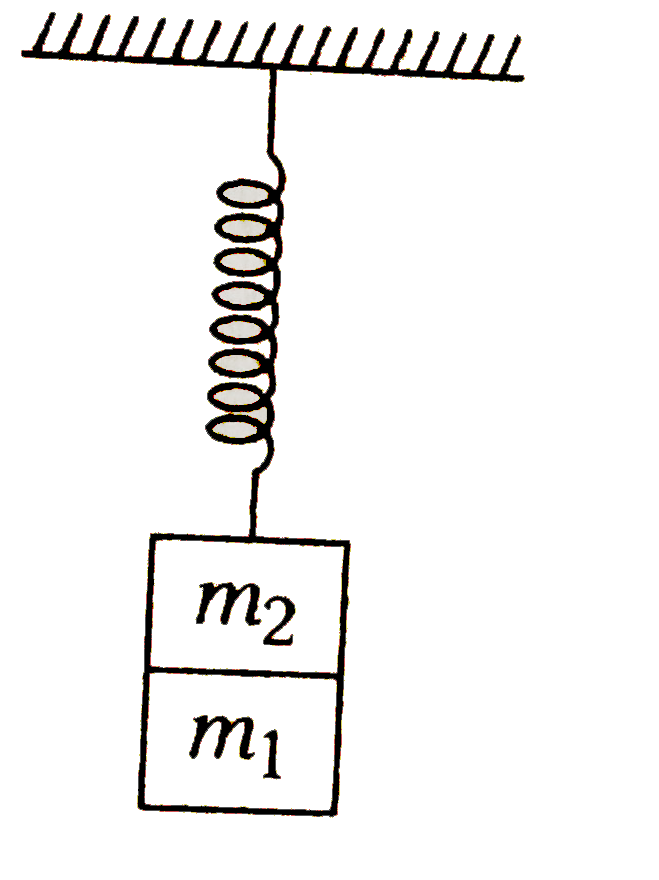 01:13View Solution
01:13View SolutionA load of mass m falls from a height h on the sclae pan hung from a spring as shown.If the spring constant is k and mass of the scale pan is zero and the mass m does not bounce relative to the pan, then the amplitude of vibration is
 08:49View Solution
08:49View SolutionFrequency of a particle executing SHM is 10 Hz. The particle is suspended from a vertical spring. At the highest point of its oscillation the spring is unstretched. Maximum speed of the particle is (g=10m/`s^(2)`
02:36View SolutionThe potential energy of a particle of mass 1 kg in motin along the x-axis is given by
U = 4(1-cos2x)J
Here, x is in meter. The period of small osciallationis (in second) is02:14View SolutionAn object of mass 0.2 kg executes simple harmonic oscillation along the x-axis with a frequency `(25)/pi`. At the position x = 0.04m, the object has kinetic energy 0.5J and potential energy 0.4J. amplitude of oscillation is (potential energy is zero mean position).
02:21View SolutionThe string of a simple pendulum replaced by a uniform rod of length `L` and mass `M` while the bob has a mass `m`. It is allowed to make small oscillation. Its time period is
04:24View Solution
A uniform semicurcular ring having mass m and radius `r` is hanging at one of its ends freely as shown if Fig. The ring is slightly disturbed so the it oscillates in its own plane. The time period of oscillation of the ring isView SolutionTwo springs with negligible massess and force constant of `k_(1)= 200 Nm^(-1)` and `k_(2)=160Nm^(-1)` are attached to the block of mass m = 10kg as shown in the figure. Initially the block is at rest at the equilibrium position the block is at rest at the equilibrium position nor compressed. At time t=0, sharp impulse of 50 N-s is given to the block.
 03:10View Solution
03:10View Solution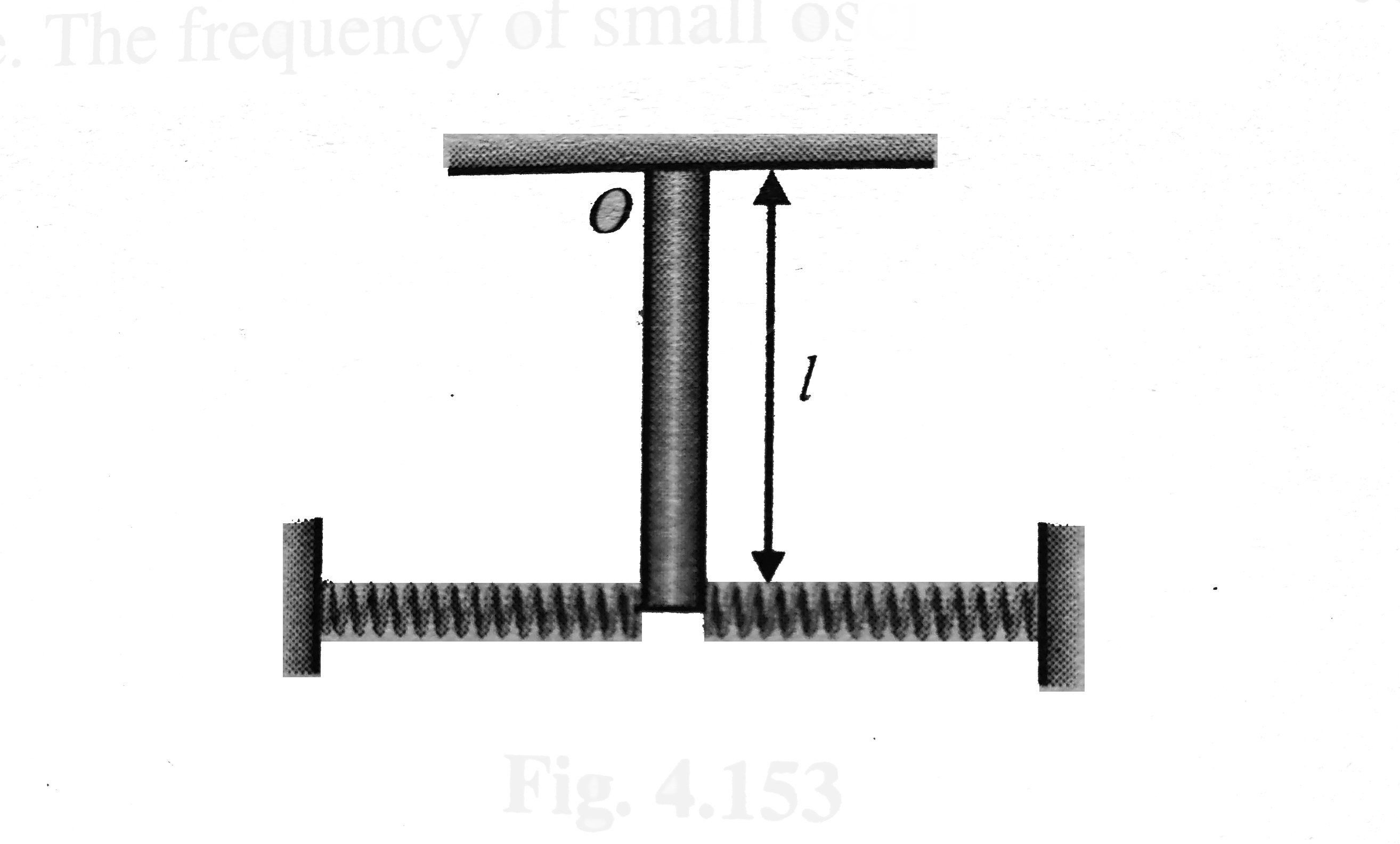
A thin uniform vertical rod of mass `m` and length l pivoted at point O is shown is Fig. The combined stiffness of the springs is equal to `k`. The mass of the spring is negligible. Te frequency of small oscillation is .05:32View SolutionThe period of a particle executing SHM is 8 s . At t=0 it is at the mean position . The ratio of the distances covered by the particle in the 1st second to the 2nd second is
05:08View SolutionA particle executed S.H.M. starting from its mean position at `t=0`, If its velocity is `sqrt3bomega`, when it is at a distance b from the mean positoin, when `omega=(2pi)/(T)`, the time taken by the particle to move from b to the extreme position on the same side is
04:15View SolutionIn a certain oscillatory system (particle is performing SHM), the amplitude of motion is 5 m and the time period is 4 s. the minimum time taken by the particle for passing betweens points, which are at distances of 4 m and 3 m from the centre and on the same side of it will approximately be
03:03View SolutionA particle of mass `m` moving along x-axis has a potential energy `U(x)=a+bx^2` where a and b are positive constant. It will execute simple harmonic motion with a frequency determined by the value of
01:43View SolutionThe instantaneous displacement `x` of a particle executing simple harmonic motion is given by `x=a_1sinomegat+a_2cos(omegat+(pi)/(6))`. The amplitude `A` of oscillation is given by
02:47View SolutionA simple harmonic motion along the x-axis has the following properties: amplitude `=0.5m` the time to go from one extreme position to other is `2s` and `x=0.3m` at `t=0.5`. the general equation of the simple harmonic motion is
01:57View SolutionA spring balance has a scale that reads from 0 to 50 kg. The length of the scale is 20cm. A body suspended from this balance, when displaced and released, oscillates with a period of 0.6 s. What is the weight of the body ?
04:26View Solution
A soil cylinder of mass `M` and radius `R` is connected to a spring as shown in fig. The cylinder is placed on a rough horizontal surface. All the parts except the cylinder shown in the figure are light. If the cylinder is displaced slightly from its mean position and released, so that it performs pure rolling back and forth about its equilibrium position, determine the time period of oscillation?05:01View Solution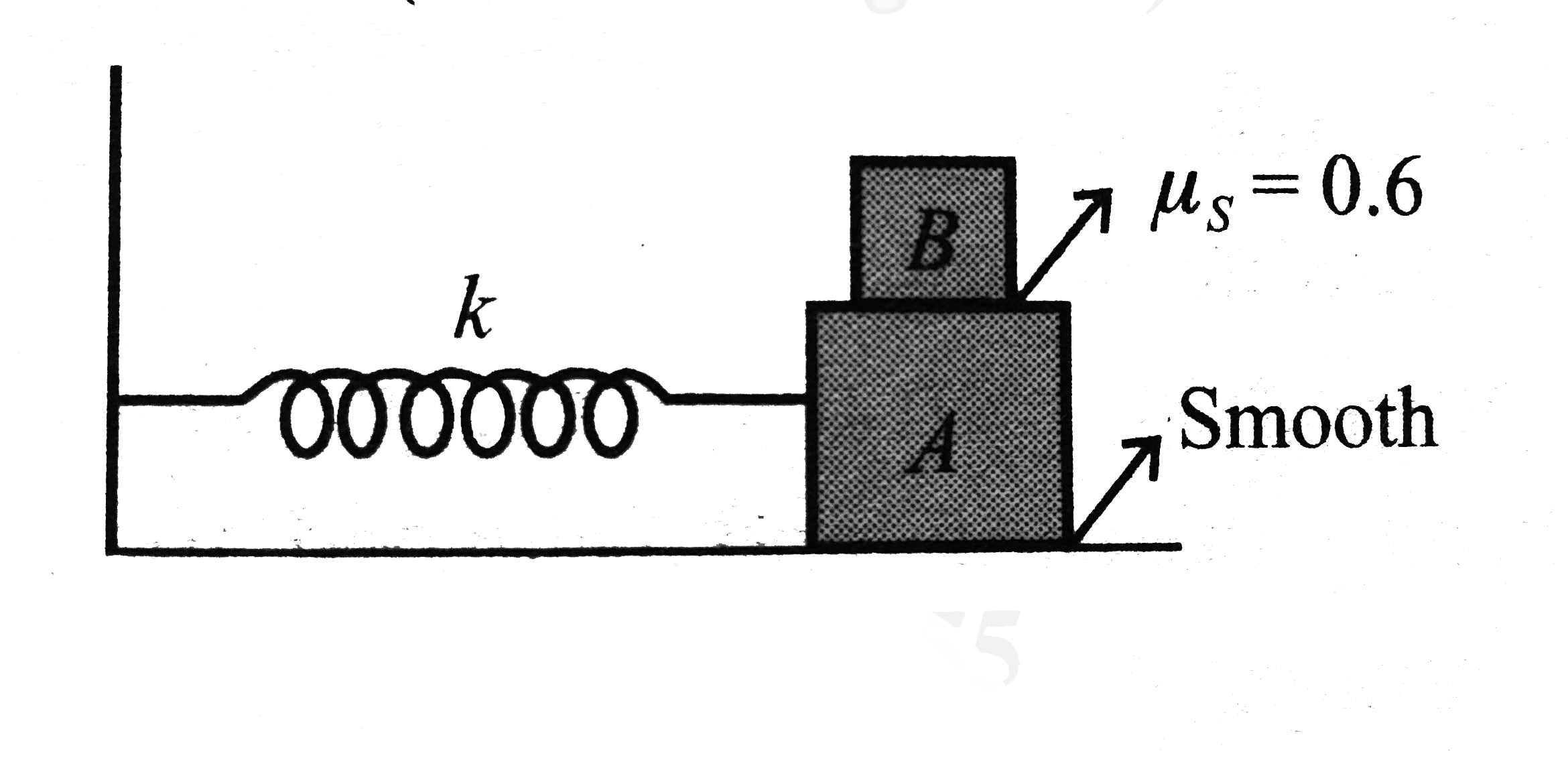
A block A is connected to spring and performs simple harmonic motion with a time period of 2 s. Another block B restes on a. The coefficient of static friction between `A` and `B` is `mu_S=0.6`. The maximum amplitude of oscillation which the system can have so that there is no relative motion between A and B is (take `pi^2=g=10`)02:35View SolutionA block of mass m is suspended from the ceiling of a stationary standig elevator through a spring of spring constant k. Suddenly, the cable breaks and the elevator starts falling freely. Show that the bklock now executes a simple harmonic motion of amplitude `mg/k` in the elevator
02:25View SolutionA mass m attached to a spring of spring constant `k` is stretched a distance `x_0` from its equilibrium position and released with no initial velocity. The maximum speed attained by mass in its subsequent motion and the time at which this speed would be attained are, respectively.
03:36View Solution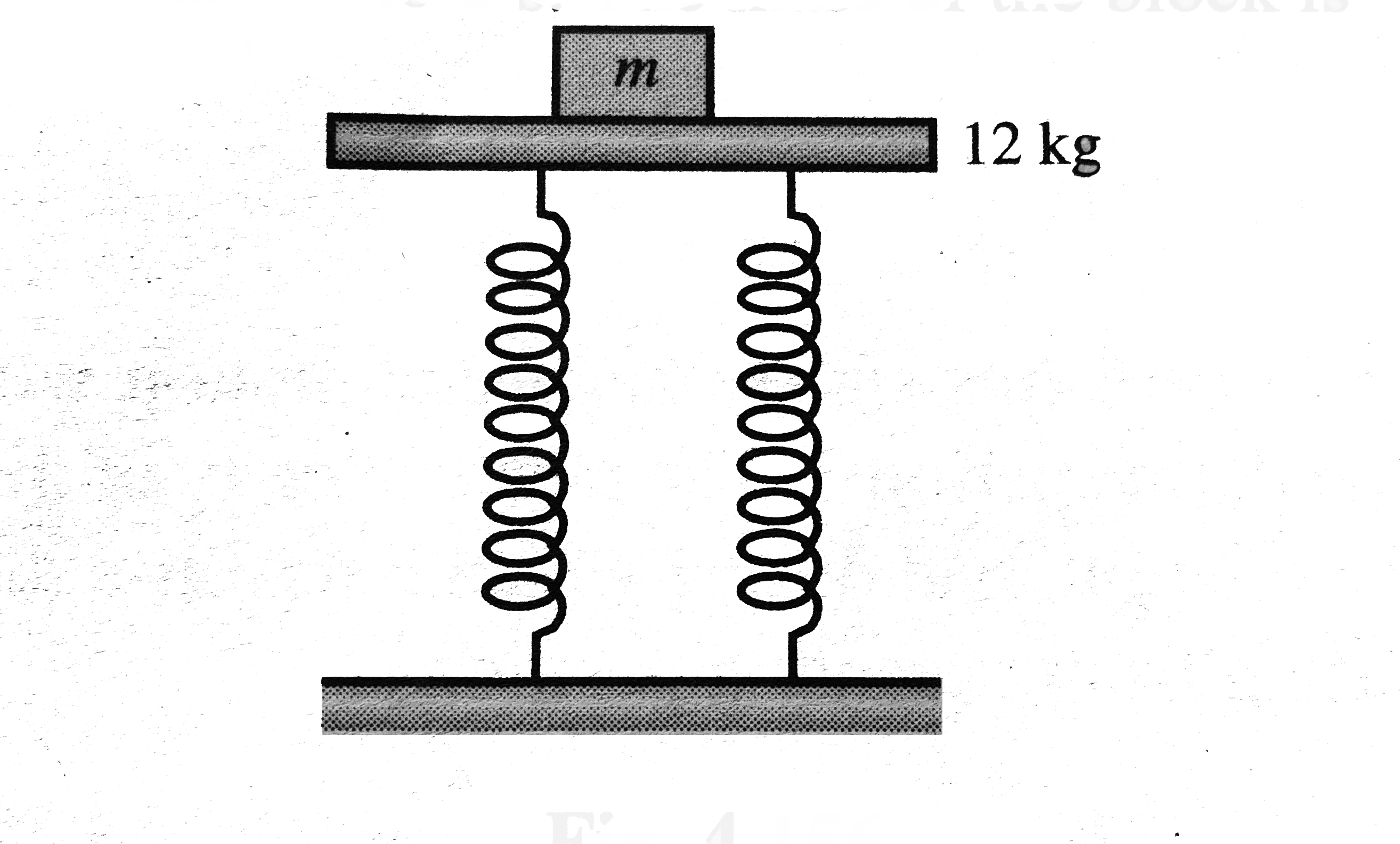
A plank of mass 12 kg is supported by two identical springs as shown is Fig. The plank always remains horizontal. When the plank is pressed down and released it performs simple harmonic motion with time period 3 s. When a block of m is attached to the plank the time priod changes to 6 s. The mass of the block is05:03View SolutionThe time taken by a particle performing SHM to pass from point A and B where it is velocities are same is 2s. After another 2 s it returns to B. The time period oscillation is (in seconds)
02:36View SolutionTwo springs are made to oscillate simple harmonically due to the same mass individually. The time periods obtained are `T_1` and `T_2`. If both the springs are connected in series and then made to oscillate by the same mass, the resulting time period will be
03:29View Solution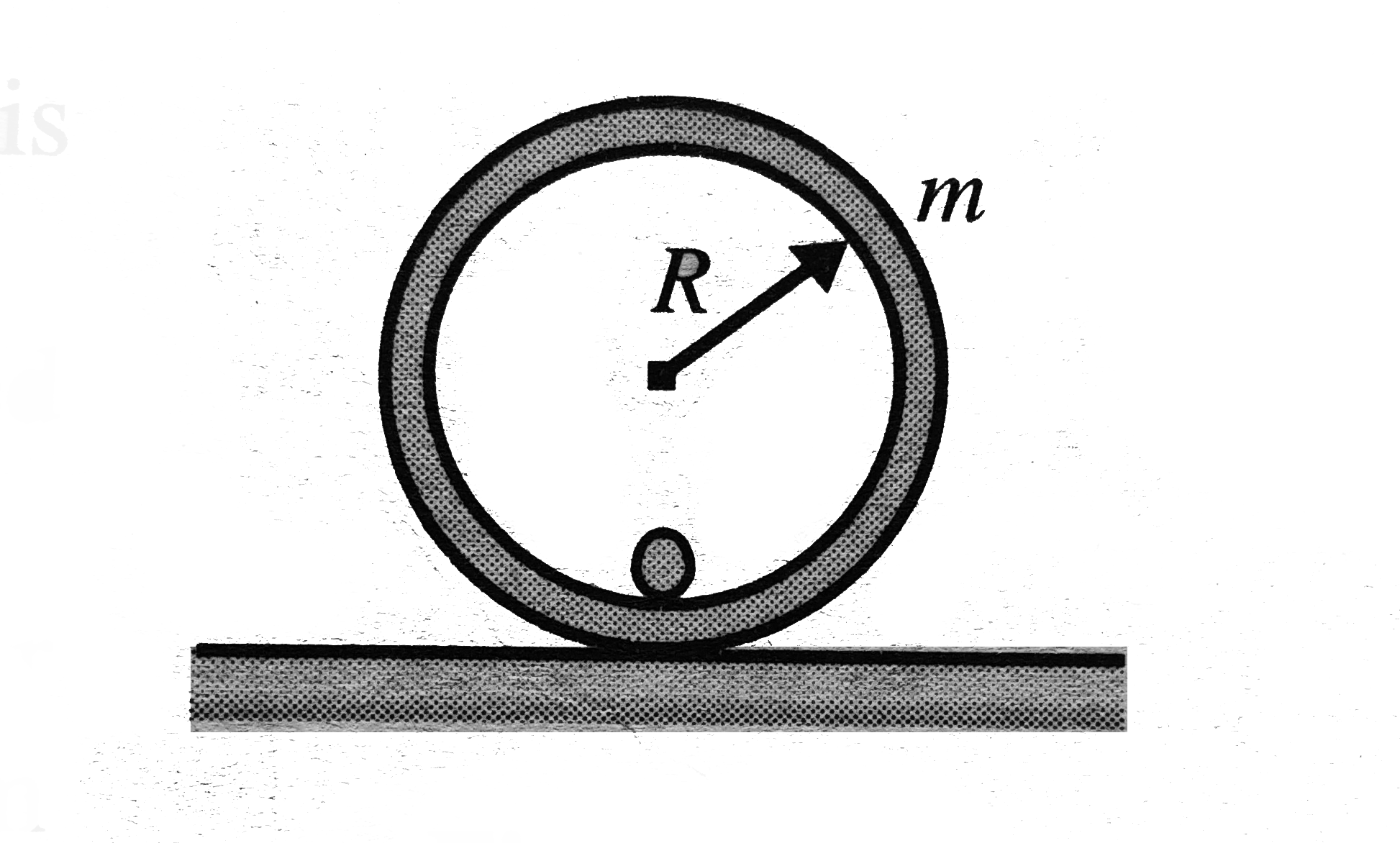
A thin-walled tube of mass m and radius R has a rod of mass m and vry small cross section soldered on its inner surface. The side-view of the arrangement is as shown in the following figure. The entire arrangement is placed on a rough horizontal surface. The system is given a small angular displacement from its equilibrium position, as a result, the system performs oscillations. The time period of resulting oscillations if the tube rolls without slipping is04:45View SolutionA thin uniform rod of mass 1 kg and length 12 cm is suspended by a wire that passes through its centre and is perpendicular to its length.The wire is twisted and the rod is set oscillating. Time period of oscillation is found to be 3 s. When a flat triangular plate is suspended in same way through its centre of mass, the time period is found to be 6 s. The moment of inertia of the tringular plate about this axis is
03:04View SolutionA particle performs SHM about `x=0` such that at `t=0` it is at `x=0` and moving towards positive extreme. The time taken by it to go from `x=0` to `x=(A)/(2)` is____ time the time taken to go from `x=(A)/(2)` to `A`. The most suitable option for the blank space is
04:18View SolutionA particle performs SHM with a period `T` and amplitude a. The mean velocity of particle over the time interval during which it travels `a//2` from the extreme position is
03:25View SolutionA particle performs simple harmonic motion about `O` with amolitude `A` and time period `T`. The magnitude of its acceleration at `t=(T)/(8)`s after the particle reaches the extreme position would be
02:53View SolutionIn the previous question, the magnitude of velocity of particle at the mentioned instant is
View SolutionAn object of mass 4 kg is attached to a spring having spring constant `100(N)/(m)`. It performs simple harmonic motion on a smooth horizontal surface with an amplitude of 2 m. A 6 kg object is dropped vertically onto the 4 kg object when it crosses the mean position, and sticks to it. the change in amplitude of oscillation due to collision is
05:15View SolutionA cork floating on the pond water executes a simple harmonic motion, moving up and down over a range of 4 cm. The time period of the motion is 1 s. at `t=0`, the cork is at its lowest position of oscillation, the position and velocity of the cork at `t=10.5s`, would be
05:10View SolutionA spring is placed in vertical position by suspending it from a hook at its top. A similar hook on the bottom of the spring is at 11 cm above a table top. A mass of 75 g and of negligible size is then suspended from the bottom hook, which is measured to be 4.5 cm above the table top. The mass is then pulled down a distance of 4 cm and released. Find the approximate. Position of the bottom hook after 5 s? Take `g=10(m)/(s^2)` and hook's mass to be negligible.
04:49View SolutionA particle is performing SHM according to the equation `x=(3cm)sin((2pit)/(18)+(pi)/(6))`, where t is in seconds. The distance travelled by the particle in 39 s is
04:09View SolutionWhich one is not correct for a cyclic process as shown in the figure ?
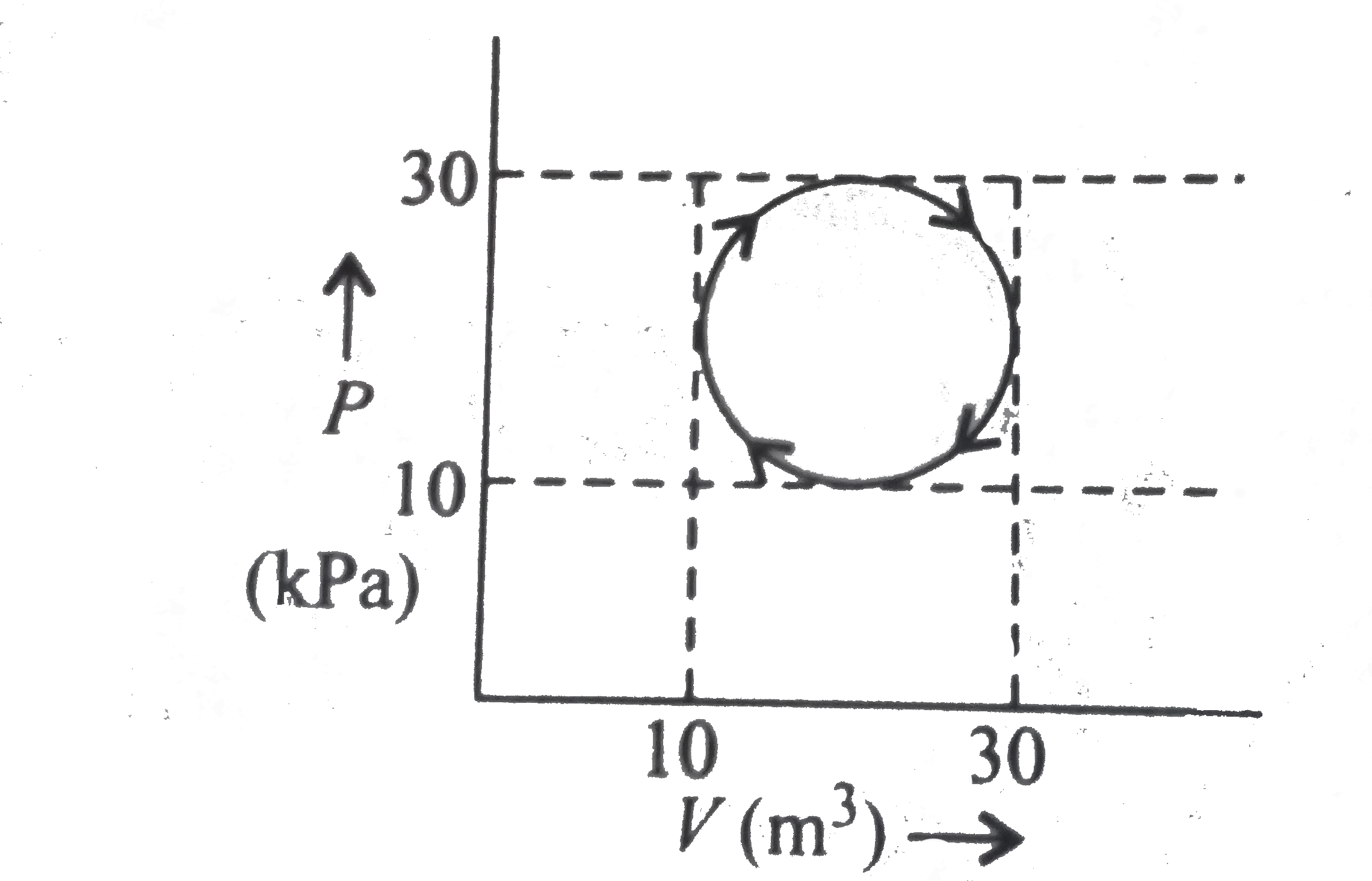 03:04View Solution
03:04View SolutionA particle of mass m is present in a region where the potential energy of the particle depends on the x-coordinate according to the expression `U=(a)/(x^2)-(b)/(x)`, where a and b are positive constant. The particle will perform.
04:50View SolutionA particle performing simple harmonic motion having time period 3 s is in phase with another particle which also undergoes simple harmonic motion at `t=0`. The time period of second particle is T (less that 3s). If they are again in the same phase for the third time after 45 s, then the value of T will be
03:25View SolutionA particle performs `SHM` on x- axis with amplitude `A ` and time period period `T` .The time taken by the particle to travel a distance `A//5` starting from rest is
02:10View Solution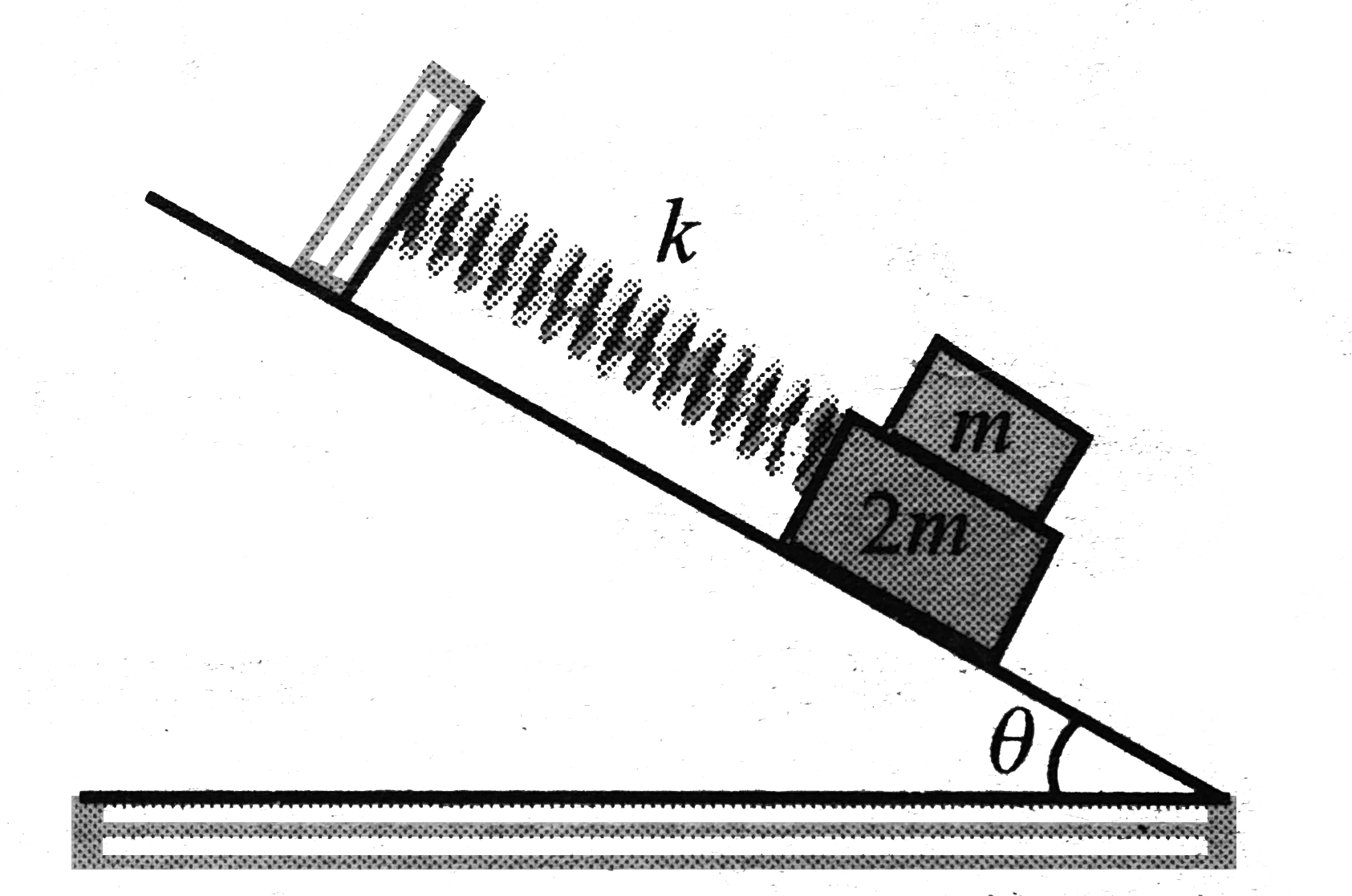
The coefficient of friction between block of mass m and `2m` is `mu=2tantheta`. There is no friction between block of mass 2 m and inclined plane. The maximum amplitude of the two block system for which there is no relative motion between both the blocks is05:29View Solution
A block of mass `m` is suspended from a spring and executes vertical SHM of time period T as shown in Fig. The amplitude of the SHM is A and spring is never in compressed state during the oscillation. The magnitude of minimum force exerted by spring on the block is03:16View SolutionA particle performs SHM of amplitude A along a straight line. When it is at distance `sqrt(3)/2` A from mean position, its kinetic energy gets increased by an amount `1/2momega^(2)A^(2)` due to an impulsive force. Then its new amplitude becomes.
03:31View SolutionA horizontal spring -block system of mass `2kg` executes `S.H.M` when the block is passing through its equilibrium position an object of mass `1kg` is put on it the two move together The new amplitude of vibration is `(A` being its initial amplitude)
03:10View Solution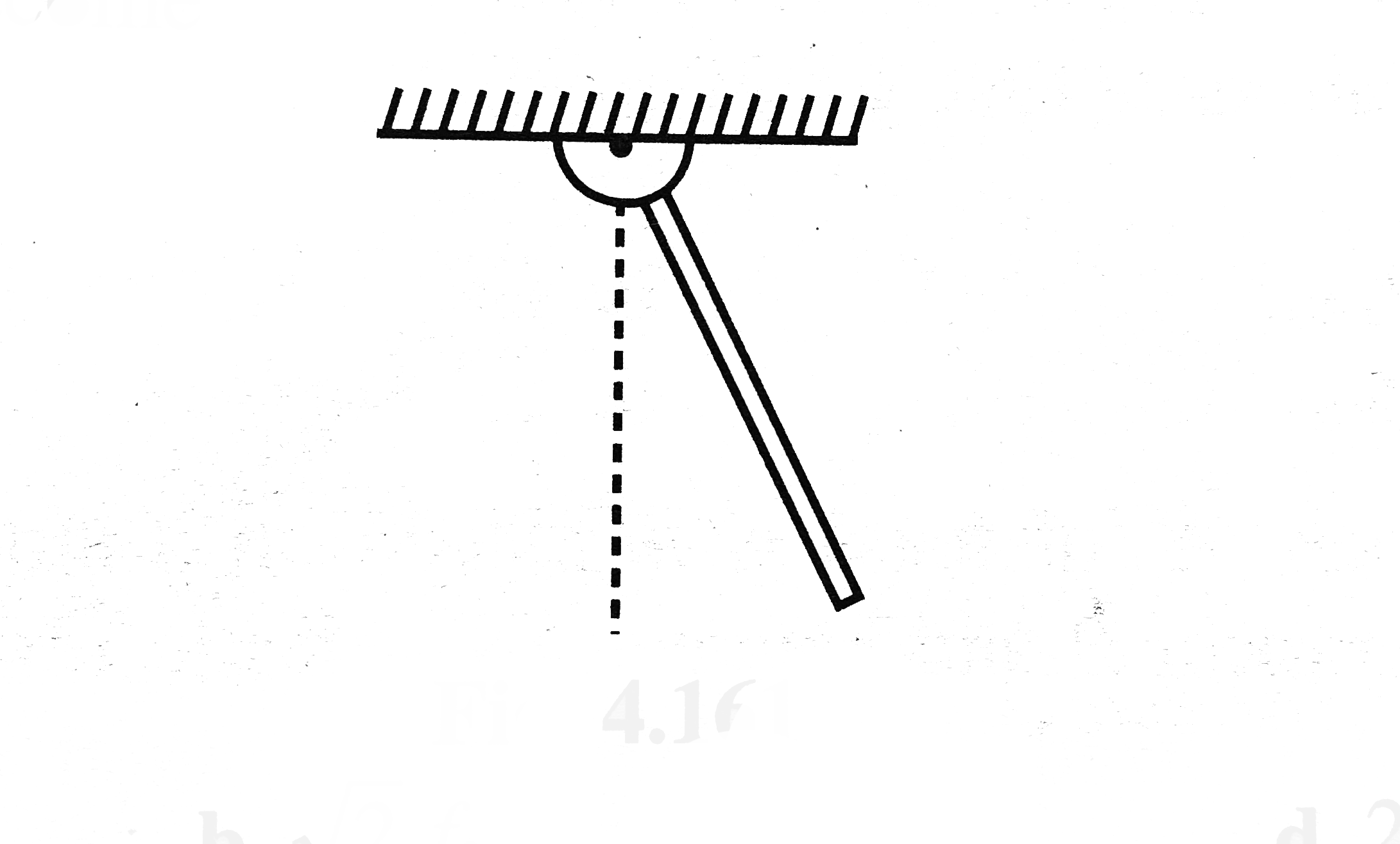
A metre stick swinging in vertical plane about a fixed horizontal axis passing through its one end undergoes small oscillation of frequency `f_0`. If the bottom half of the stick were but off, then its new frequency of small oscillation woul become.03:35View SolutionA physical pendulum is positioned so that its centre of gravity is above the suspension point. When the pendulum is realsed it passes the point of stable equilibrium with an angular velocity `omega`. The period of small oscollations of the pendulum is
03:33View SolutionA particle executing harmonic motion is having velocities `v_1` and `v_2` at distances is `x_1` and `x_2` from the equilibrium position. The amplitude of the motion is
02:02View Solution
A wire is bent an an angle `theta`. A rod of mass m can slide along the bended wire without friction as shown in Fig. A soap film is maintained in the frame kept in a vertical position and the rod is in equilibrium as shown in the figure. If rod is displaced slightly in vertical direction, then the time period of small oscillation of the rod is04:36View Solution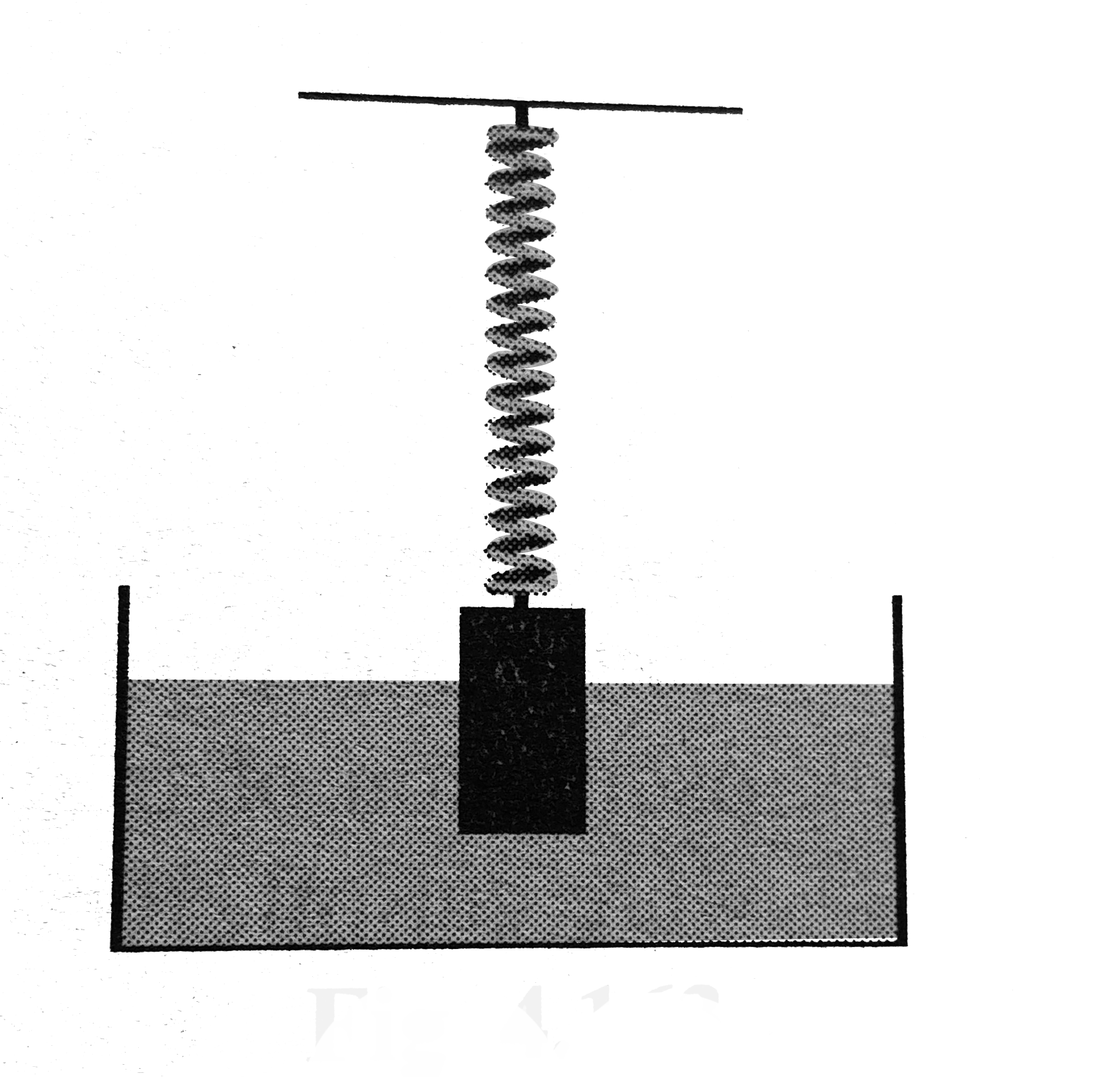
A solid right circular cylinder of weight 10 kg and cross sectional area `100cm^2` is suspended by a spring, where `k=1(kg)/(cm)`, and hangs partially submerged in water of density `1000(kg)/(m^3)` as shown in Fig. What is its perod when it makes simple harmonic vertical oscillations? (Take `g=10(m)/(s^2)`)04:41View Solution
A block `A` of mass m is placed on a smooth horizontal platform P and between two elastic massless springs `S_1` and `S_2` fixed horizontally to two fixed vertical walls. The elastic constants of the two springs are equal to k and the equilibrium distance between the two springs both in relaxed states is d. The block is given a velocity `v_0` initially towards one of the springs and it then oscillated between the springs. The time period `T` of oscillations and the minimum separation `d_m` of the spring will be03:26View SolutionA certain simple harmonic vibrator of mass 0.1 kg has a total energy of 10 J. Its displacement from the mean position is 1 cm when it has equal kinetic and potential energies. The amplitude A and frequency n of vibration of the vibrator are
03:17View SolutionA simple pendulum of length `l` and mass `m` is suspended in a car that is moving with constant speed `v` around a circle of radius `r`. Find the period of oscillation and equilibrium position of the pendulum.
03:33View Solution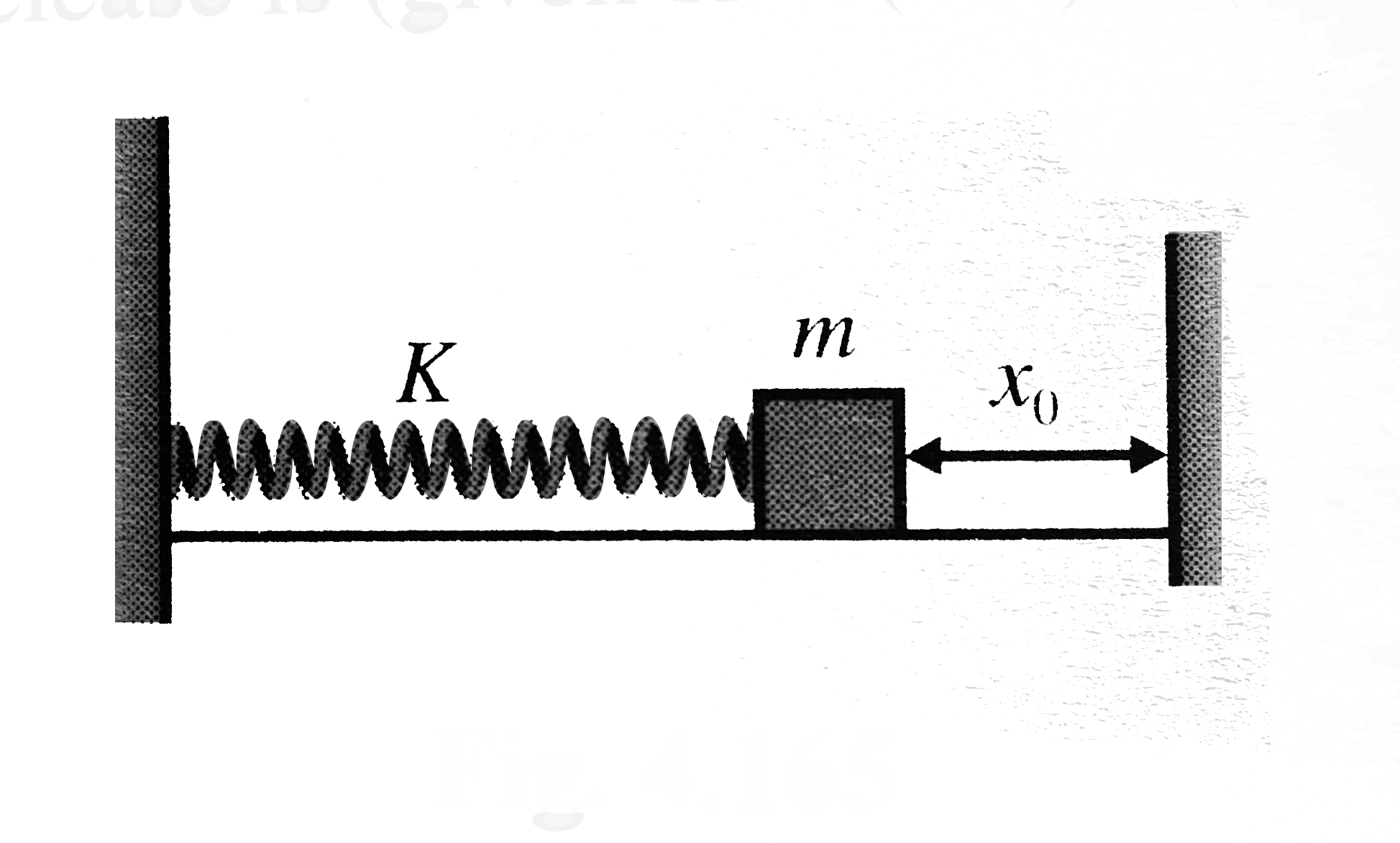
One end of a spring of force constant K is fixed to a vertical wall and the other to a body of mass m resting on a smooth horizontal surface. There is another wall at a distance `x_0` from the body. The spring is then compressed by `3x_0` and released. The time taken to strike the wall from the instant of release is (given `sin^-1((1)/(3))=((pi)/(9))`)03:31View SolutionA block P of mass m is placed on horizontal frictionless plane. A second block of same mass m is placed on it and is connected to a spring of spring constant k, the two blocks are pulled by distance A. Block Q oscillates without slipping. What is the maximum value of frictional force between the two blocks.
 03:13View Solution
03:13View SolutionA uniform stick of mass `M` and length `L` is pivoted its come its ends are attached to two spring each of the constant `K`. In the position shown in figure the same through a small length when spring is display through a small angle of and released. The stick :
 View Solution
View Solution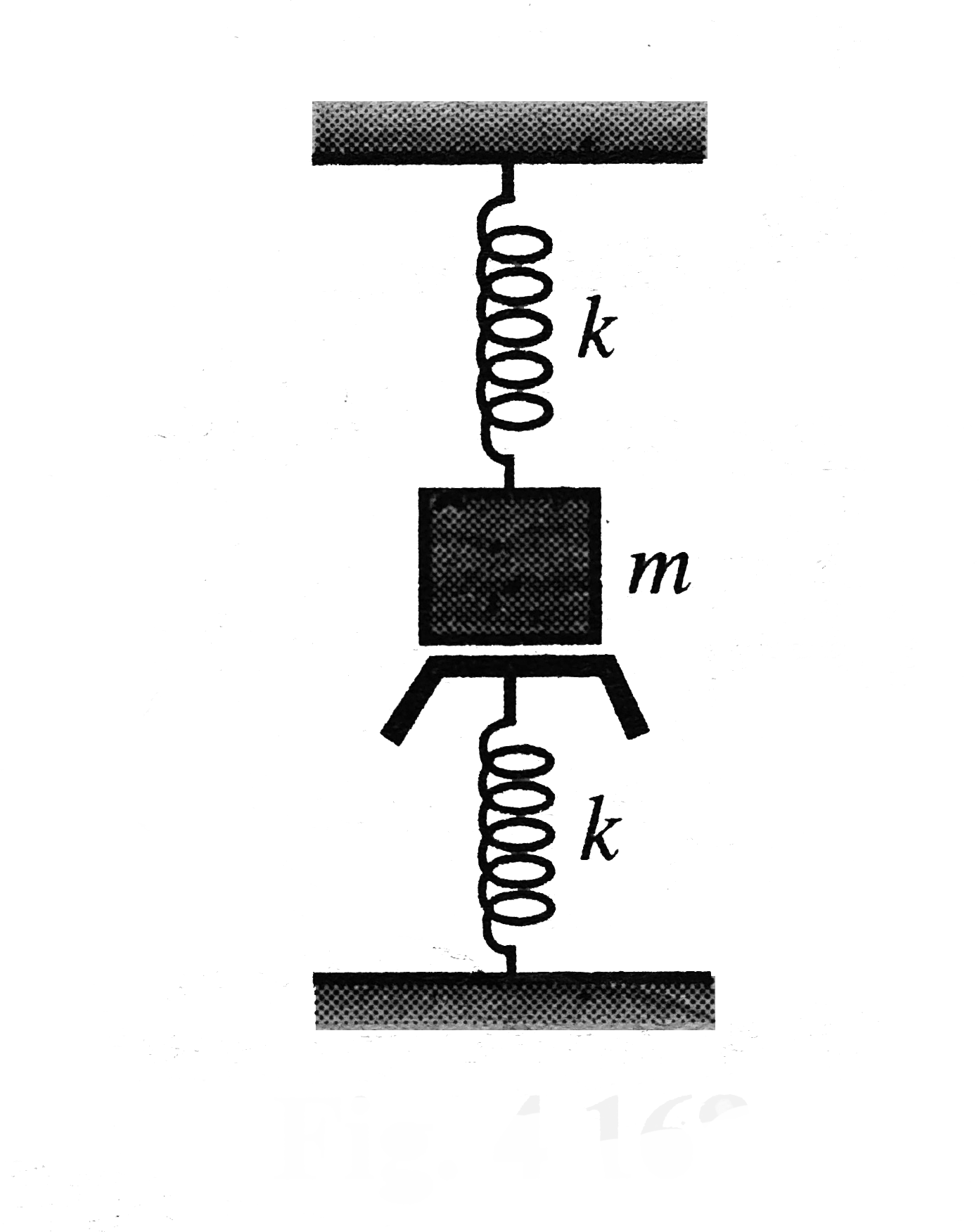
A mass m is suspended from a spring of force constant k and just touches another identical spring fixed to the floor as shown in the fig. The time period of small oscillations is02:46View SolutionA street car moves rectilinearly from station A to the next station B (from rest to rest) with an acceleration varying according to the law `f = a-bx,` where a and b are constants and x is the distance from station A. The distance between the two stations and the maximum velocity are
03:36View SolutionTwo particles P and Q describes SHM of same amplitude a and frequency v along the same straight line. The maximum distance between the two particles is `sqrt2a`. The initial phase difference between them is
03:02View SolutionThe velocity `v` of a particle of mass is moving along a straight line change with time `t` as `(d^(2)v)/(dt^(2)) = - Kv` where `K` is a particle constant which of the following statement is correct?
03:21View SolutionThe osciallations represented by curve 1 in the graph are expressed by equation `x=A sinepsilont`. The equation for the oscillations represented by curve 2 is expressed as
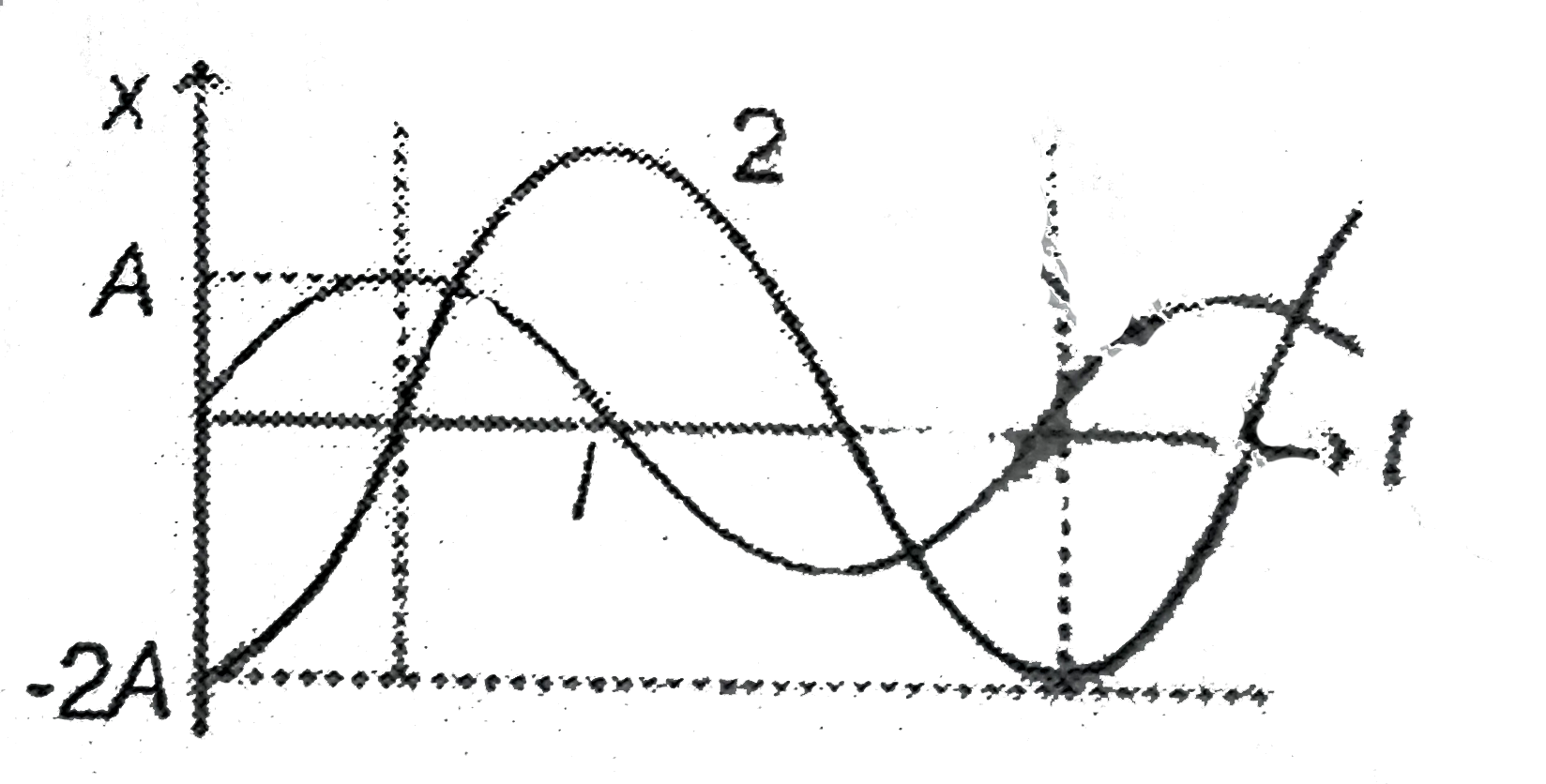 02:54View Solution
02:54View Solution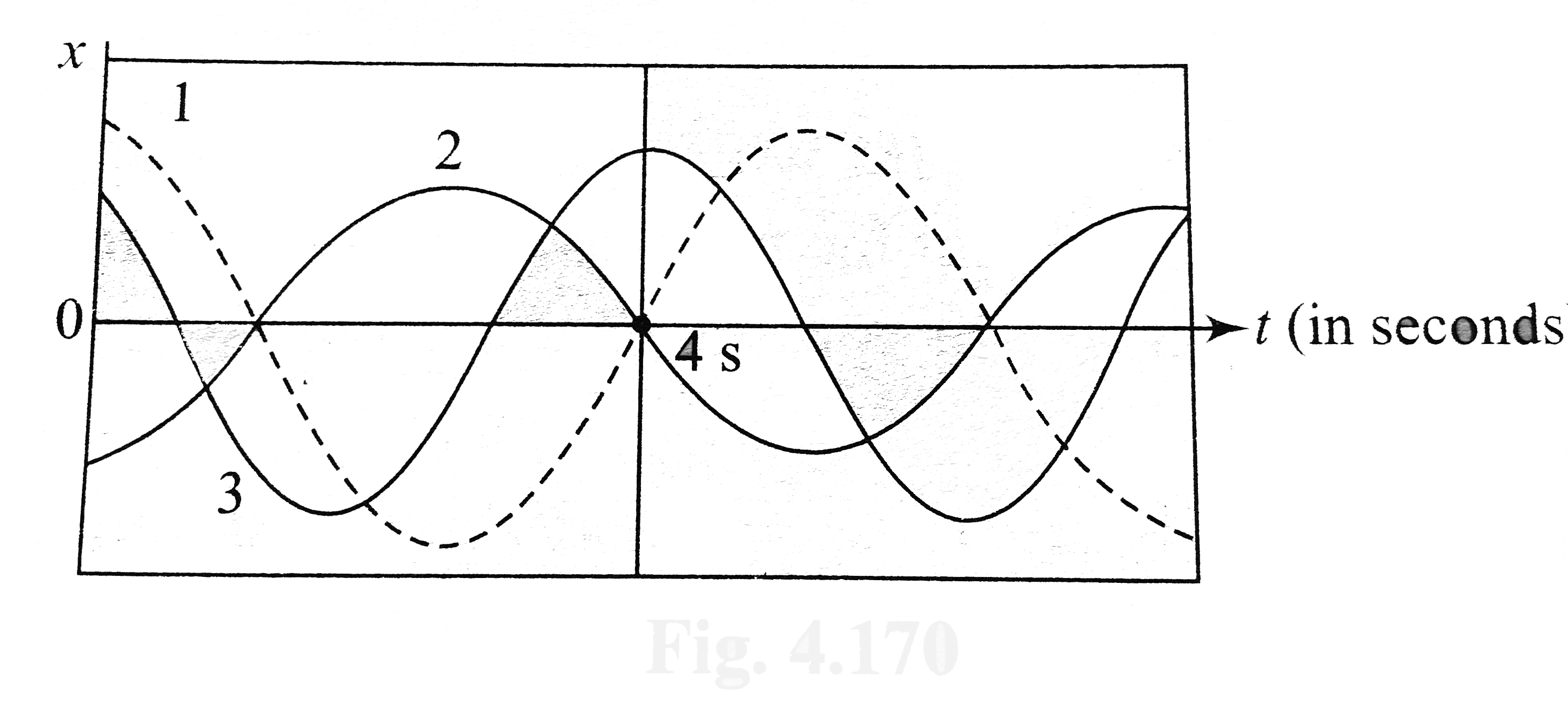
Graph shows the `x(t)` curves for the three experiments involving a particular spring block system oscillating in SHM. The kinetic energy of the system is maximum at `t=4` s. For the situation.02:25View SolutionThe acceleration of a particle is `a = - 100x + 50`. It is released from `x = 2`. Here, `a` and `x` are in SI units
03:35View SolutionIn the above question, the speed of the particle at origin will be:
View SolutionA particle performs SHM of amplitude A along a straight line. When it is at distance `sqrt(3)/2` A from mean position, its kinetic energy gets increased by an amount `1/2momega^(2)A^(2)` due to an impulsive force. Then its new amplitude becomes.
03:31View SolutionA uniform pole length `l = 2l`, is laid on a smooth horizontal table as shown in figure. The mass of poleis M and it is connected to a frictionless axis at O. A spring with force constant k is connected to the other end. The pole is displaced by a small angle `theta_(0)` from equilibrium possition and released such that it it performs small oscillation. Find its angular frequency.
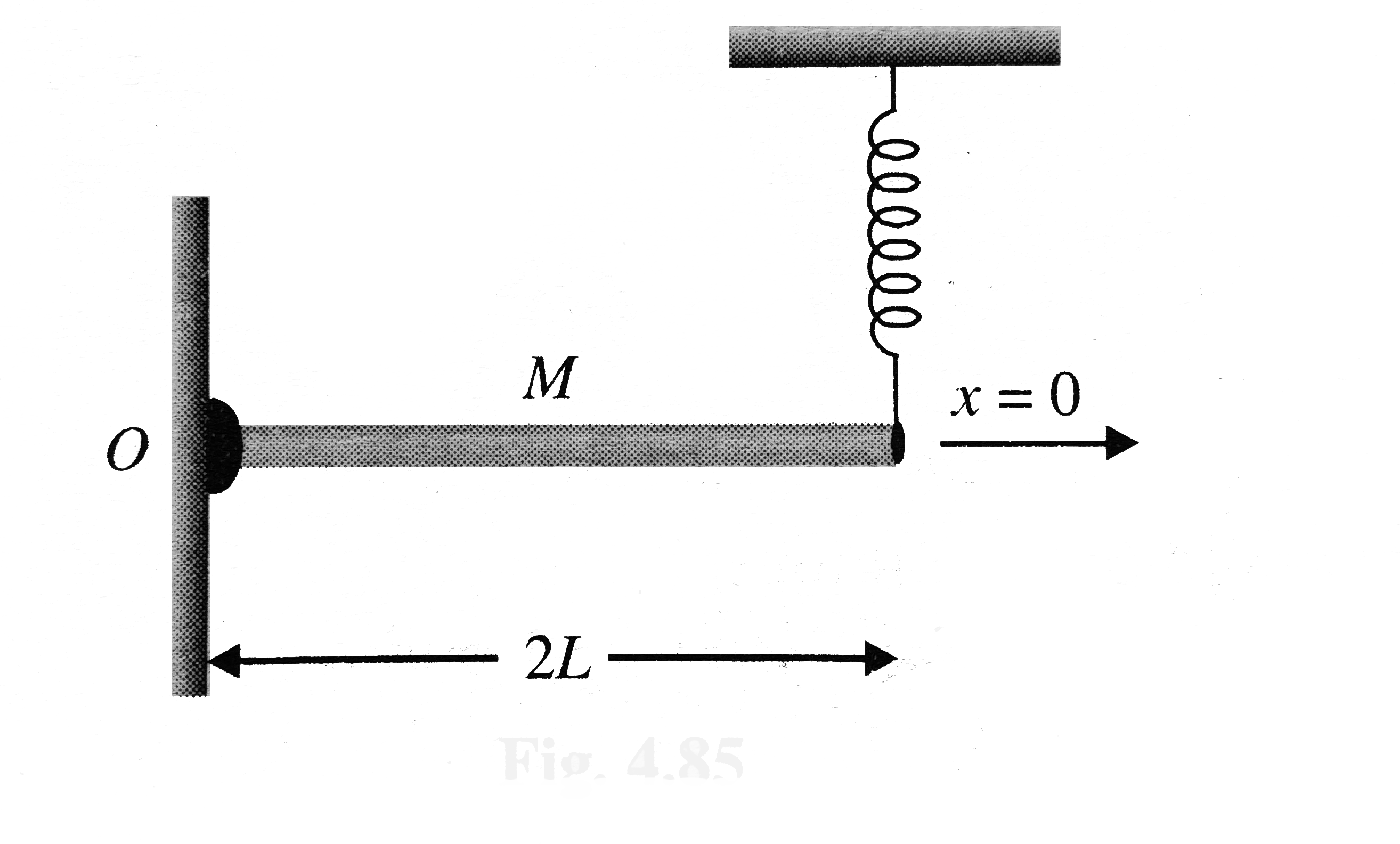 03:31View Solution
03:31View SolutionA small mass executes linear `SHM` about `O` with amplitude `a` and period `T`. Its displacement from `O` at time `T//8` after passing through `O` is:
01:21View SolutionThe period of a particle executing SHM is 8 s . At t=0 it is at the mean position . The ratio of the distances covered by the particle in the 1st second to the 2nd second is
05:08View SolutionA particle performs SHM with a period `T` and amplitude a. The mean velocity of particle over the time interval during which it travels `a//2` from the extreme position is
03:25View SolutionA graph of the square of the velocity against the square of the acceleration of a given simple harmonic motion is
02:29View SolutionA plank with a small block on top of it is under going vertical `SHM`. Its period is `2 sec`. The minium amplitude at which the block will separate from plank is :
02:38View SolutionThe potential energy of a harmonic oscillator of mass 2 kg in its mean positioin is 5J. If its total energy is 9J and its amplitude is 0.01m, its period will be
02:04View SolutionA spring mass system preforms `S.H.M` if the mass is doubled keeping amplitude same, then the total energy of `S.H.M` will become :
01:13View Solution
Single Correct questions and complete solutions for chapter LINEAR AND ANGULAR SIMPLE HARMONIC MOTION of CENGAGE PHYSICS (ENGLISH) of Class 11
